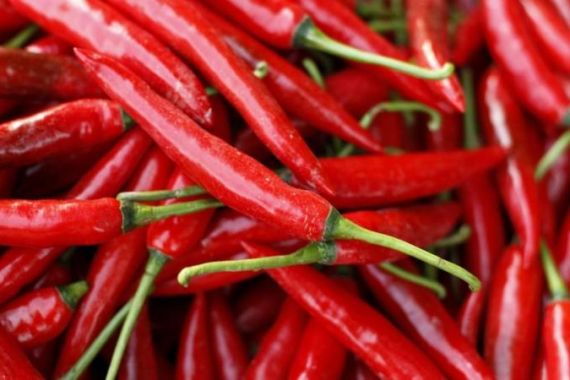Bhutan’s tears of joy over chillies
Spicy food has acquired a new meaning with chillies becoming a way of life for people in the Himalayan kingdom.

Sonam Wangyal, 32, eats her lunch on a bright, sunny afternoon in the Bhutanese capital of Thimphu. On her plate is a serving of red rice, cheese chilli curry, mushroom chilli curry, fresh green chillies with salt as a salad, topped off with a chilli pickle.
When asked if that’s too much chilli for one meal, Wangyal laughs.
Keep reading
list of 4 itemsA good, steady job? India election turns spotlight on a dream gone sour
Photos: Iran’s unravelling carpet sales
Biden labels Japan and India ‘xenophobic’ along with China and Russia
“It’s a normal Bhutanese lunch,” she says. “We don’t use chillies as a spice; we eat them like vegetables. We don’t make any curry without chillies in them. A meal here is not complete without enough chillies in it.”
As spice-provoked tears stream down her face, she admits her lunch is hot – but says she wouldn’t prefer anything else.
A way of life
In the picturesque Himalayan country known for championing Gross National Happiness (GNH) as a measure of development, chillies are a way of life.
Like many Bhutanese, Wangyal began eating chillies when she was a toddler.
“I am so used to hot food now that anything without enough spice is bland and boring,” Wangyal says.
The country’s national dish, ema datshi (which translates to cheese chilli) relies heavily on the “vegetable”, and can be found in every restaurant across the landlocked kingdom.
Kesang Choedon, a traditional chef and expert in Bhutanese cuisine who heads the Folk Heritage Museum in Thimphu – which showcases the country’s culinary culture – explained that chillies are not indigenous to Bhutan. “Chillies probably came to Bhutan through India. But much before chillies began being used in traditional cuisine, we used a herb locally known as namda. This herb gives a very hot flavour when boiled with the food.”
Chillies, which originated in South America, are believed to have arrived in India in the 16th Century, before being taken to Bhutan two centuries later by pilgrims and traders.
Choedon said hot food became integral to Bhutan because it was a natural way to stay warm in the winters.
“The chillies keep you energised,” she explained. “It makes you sweat! In the olden days, when we didn’t have any proper heating systems for houses, spicy meals were a natural option.”
Choedon added that chillies also hold importance in Bhutanese rituals outside the kitchen. “From time to time, every house burns some chillies to keep the bad spirits or the demons away,” she said. “Similarly, when we’re brewing the local liquor aara, we add three chillies in it – not to add flavour or spice – but for good luck, so that the aara isn’t affected by any negative energy it comes in contact with.”
Most common commodity
The Centenary Farmer’s Market is a weekend market in Thimphu that runs from Thursday through Sunday. Not surprisingly, the most common commodity on sale here is chilli.
The variety of chillies is mind boggling – red, green, fleshy, slender, round, dried, blanched, powdered, and pickled. Dried red chillies are called ema kam whereas dried green chillies are called hoo kam; they hail from different parts of central and western Bhutan.
In the past, every family in Bhutan grew chillies in their farm. But with an increasingly urbanised culture in Thimphu, the practice has become increasingly difficult, and markets like this one are flourishing with chilli trade.
 |
| Ema datshi, the national dish, can be found in restaurants across the landlocked kingdom [Gayatri Parameswaran/Al Jazeera] |
Tsering Dema, 42, who shops at the market every week, purchased one kilogram of green chillies. “One kilo is enough for one week for my family. I will be using it to make ema datshi and aezaye [pickled chillis],” she said.
She adds that though she loves the flavour, she’s cautious about eating very hot food because of the health risks involved.
Her concerns are not unfounded: eating all these chillies over a lifetime is believed to cause legitimate health concerns. Some reports suggest that peptic ulcers – ulcers in the stomach – are a growing cause for death among the Bhutanese people.
Myths on the potentially harmful effects of chillies also abound. While dining at a small shack in Thimphu, local Tenzing Norbu jokes about how eating too many chillies has lowered his intelligence. “These chillies, they are not good for your brain. That’s why we Bhutanese people haven’t made much progress! If you have a 2GB memory, you’ll go right down to 1GB with all these chillies.”
Keeping the tradition alive
But Choedon views the claims about health risks sceptically.
“I am 50 and I have been eating chillies all my life. I am fit and fine,” she said. “I think it really depends on the constitution of one’s body. Some people may be prone to risks and others can handle it well.”
Of greater concern to Choedon is the possibility of Bhutanese chillies and cuisine losing their significance in the wake of increasing globalisation.
“I work to preserve recipes. I’ve been researching about food recipes that have been lost already,” she said. “It’s tragic.”
Choeden attributes much of her knowledge about Bhutanese food and some of these forgotten recipes to her grandmother. “I have learned so many valuable things about Bhutanese cuisine [from her]. She helped me study the culture through food. I’d ask her how this and that was done and we would both sit together and write these things down.”
She fears that this level of interest in Bhutanese heritage and interaction with elders is missing for today’s youth.
“Today’s youngsters are exposed to more and more western cuisine. They like their spaghetti and pizza. I just hope that they don’t forget our chillies and culinary culture while expanding their taste buds.”